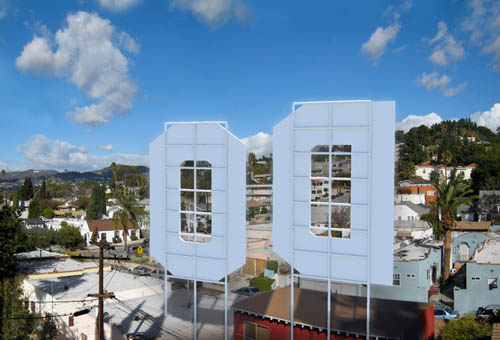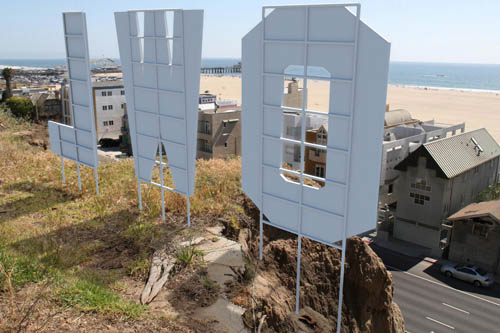 [Image: An otherwise unrelated image of car-based LiDAR navigation, via Singularity Hub].
[Image: An otherwise unrelated image of car-based LiDAR navigation, via Singularity Hub].
There was a lot of design interest a few years back in a product that allowed cyclists to project their own bike lanes, an idea that is still being honed today.
Transportation infrastructure that only exists in the form of a projection is a great analogy for the state of cycling in the U.S. today, but what we might call projected infrastructure—road signs, bike lanes, and crosswalks that aren’t really there—can apparently also be weaponized, turned against the machine-sensing systems that navigate and steer driverless vehicles.
Researchers at Ben-Gurion University, for example, have shown that fake, drone-projected street signs can spoof driverless cars. Amazingly, these fake street signs can apparently exist for only 100 milliseconds and still be read as “real” by a car’s sensing package. They are like flickering ghosts only cars can perceive, navigational dazzle imperceptible to humans.
As if pitching a scene for the next Mission: Impossible film, Ars Technica explains that “a drone might acquire and shadow a target car, then wait for an optimal time to spoof a sign in a place and at an angle most likely to affect the target with minimal ‘collateral damage’ in the form of other nearby cars also reading the fake sign.” One car out of twenty suddenly takes an unexpected turn.
Although this spoof is, for now, entirely visual, “a more advanced attacker might combine GNSS [Global Navigation Satellite System] spoofing and perhaps even active radar countermeasures in a very serious bid at confusing its target,” Ars Technica adds. Cars, lost in their own technical hallucinations, being steered to unknown destinations, unaware that they’ve even strayed.
 [Image: From “HLYWD” by
[Image: From “HLYWD” by 
 [Images: From “HLYWD” by Jeffrey Inaba and Darien Williams].
[Images: From “HLYWD” by Jeffrey Inaba and Darien Williams]. [Image: From “HLYWD” by Jeffrey Inaba and Darien Williams].
[Image: From “HLYWD” by Jeffrey Inaba and Darien Williams].